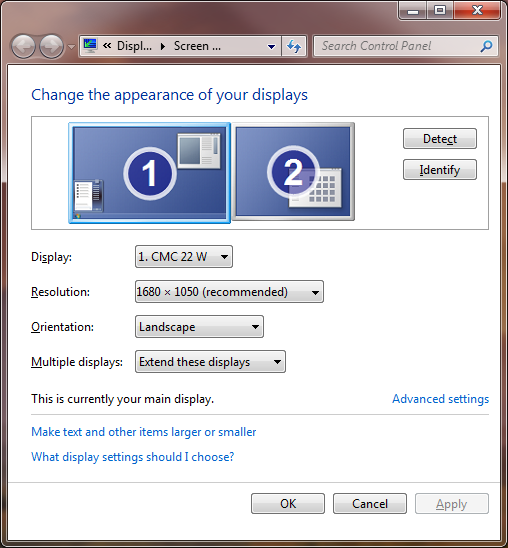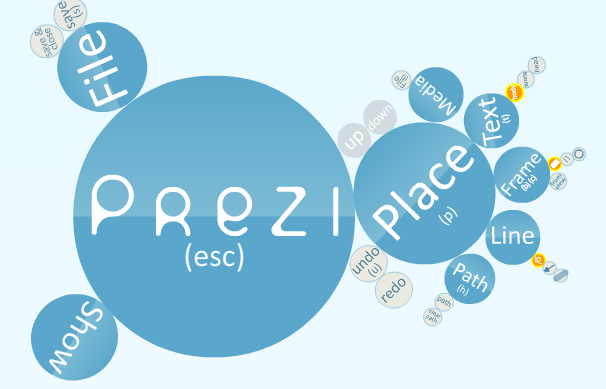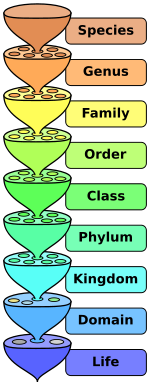I have been working on a program that prints any document you provide to it, as long as there is an application installed on your computer that can handle that document. One issue that we have with it is Duplex printing, i.e. getting the documents to print double-sided. This is a story of how we solved this issue.
The way this problem used to be handled is to install two printers, one set to always print single-sided and another to always print double-sided. Actually a third would be needed to allow the user to keep custom settings for their own preferences. The application would then switch the default printer in Windows to the appropriate printer, depending on the user choice and duplex requirement. We needed to keep the same user interface, but would have liked to have been able to use just the one printer and programmatically set duplex on or off. In this case I was using Visual Basic 6 although it could just as well have been in C#. Neither VB6 nor the .NET framework seem to provide an in-built way to change the Windows printer settings, they let you change the settings for the current session but not persisted.
I found some examples for how to do change a printer’s settings using calls to the Windows API:
How to set duplex printing for Microsoft Word Automation clients
http://support.microsoft.com/kb/828638
Controlling the Printer from Word VBA
http://pubs.logicalexpressions.com/Pub0009/LPMArticle.asp?ID=116
The examples call WINSPOOL.DRV to set the printer properties. When making these calls, one needs to specify the security level required, and in all the examples I found they would use PRINTER_NORMAL_ACCESS:
Const STANDARD_RIGHTS_REQUIRED = 0xF0000
Const PRINTER_ACCESS_USE = 0x00008
Const PRINTER_NORMAL_ACCESS = (STANDARD_RIGHTS_REQUIRED Or PRINTER_ACCESS_USE)
In my testing, this worked fine on a local printer but when trying to change the settings on a network printer I was getting “access denied” errors. After some investigation, I got an explanation for what was happening. The following two articles provided the needed insight:
If you ask for STANDARD_RIGHTS_REQUIRED, you may as well ask for the moon
http://blogs.msdn.com/oldnewthing/archive/2008/02/27/7912126.aspx
Changing printer settings using C# (also see one of the first comments in the thread)
http://www.codeproject.com/KB/dotnet/NET_Printer_Library.aspx?display=PrintAll
In short, the problem was I didn’t have full administrative access to the network printers in question; I could only change local print preferences. To accomodate this, a lower access level needs to be passed to the function call. Here’s the full range of available levels:
'Access levels for interacting with a device
Const DELETE = &H10000
Const READ_CONTROL = &H20000 ' Read device information
Const WRITE_DAC = &H40000 ' Write Device Access Control info
Const WRITE_OWNER = &H80000 ' Change the object owner
' Combining these for full access to the device
Const STANDARD_RIGHTS_REQUIRED = &HF0000
'Access rights to print servers
Const SERVER_ACCESS_ADMINISTER = &H1
Const SERVER_ACCESS_ENUMERATE = &H2
'Access rights for printers
Const PRINTER_ACCESS_ADMINISTER = &H4
Const PRINTER_ACCESS_USE = &H8
For me the following seemed to work:
' Access which allows you to set duplex on or off
Const PRINTER_NORMAL_ACCESS = (READ_CONTROL Or PRINTER_ACCESS_USE)
This would be useful to know when making calls to other API functions where the security levels need to be taken into account, in a network environment.
Here’s the full code, based on the example provided in the article above. I only tested the SetDuplex function.
Option Explicit
Private Type PRINTER_DEFAULTS
pDatatype As Long
pDevmode As Long
DesiredAccess As Long
End Type
Private Type PRINTER_INFO_2
pServerName As Long
pPrinterName As Long
pShareName As Long
pPortName As Long
pDriverName As Long
pComment As Long
pLocation As Long
pDevmode As Long ' Pointer to DEVMODE
pSepFile As Long
pPrintProcessor As Long
pDatatype As Long
pParameters As Long
pSecurityDescriptor As Long ' Pointer to SECURITY_DESCRIPTOR
Attributes As Long
Priority As Long
DefaultPriority As Long
StartTime As Long
UntilTime As Long
Status As Long
cJobs As Long
AveragePPM As Long
End Type
Private Type DEVMODE
dmDeviceName As String * 32
dmSpecVersion As Integer
dmDriverVersion As Integer
dmSize As Integer
dmDriverExtra As Integer
dmFields As Long
dmOrientation As Integer
dmPaperSize As Integer
dmPaperLength As Integer
dmPaperWidth As Integer
dmScale As Integer
dmCopies As Integer
dmDefaultSource As Integer
dmPrintQuality As Integer
dmColor As Integer
dmDuplex As Integer
dmYResolution As Integer
dmTTOption As Integer
dmCollate As Integer
dmFormName As String * 32
dmUnusedPadding As Integer
dmBitsPerPel As Integer
dmPelsWidth As Long
dmPelsHeight As Long
dmDisplayFlags As Long
dmDisplayFrequency As Long
dmICMMethod As Long
dmICMIntent As Long
dmMediaType As Long
dmDitherType As Long
dmReserved1 As Long
dmReserved2 As Long
End Type
Private Const DM_ORIENTATION = &H1
Private Const DM_PAPERSIZE = &H2
Private Const DM_PAPERLENGTH = &H4
Private Const DM_PAPERWIDTH = &H8
Private Const DM_DEFAULTSOURCE = &H200
Private Const DM_PRINTQUALITY = &H400
Private Const DM_COLOR = &H800
Private Const DM_DUPLEX = &H1000
Private Const DM_IN_BUFFER = 8
Private Const DM_OUT_BUFFER = 2
Private Const DELETE = &H10000
Private Const READ_CONTROL = &H20000 ' Allowed to read device information
Private Const WRITE_DAC = &H40000 ' Allowed to write device access control info
Private Const WRITE_OWNER = &H80000 ' Allowed to change the object owner
' Combining these for full access to a device (DELETE + READ_CONTROL + WRITE_DAC + WRITE_OWNER):
Private Const STANDARD_RIGHTS_REQUIRED = &HF0000
Private Const SERVER_ACCESS_ADMINISTER = &H1 ' Access rights to administer print servers.
Private Const SERVER_ACCESS_ENUMERATE = &H2 ' Access rights to enumerate print servers.
Private Const PRINTER_ACCESS_ADMINISTER = &H4 ' Access rights for printers to perform administrative tasks.
Private Const PRINTER_ACCESS_USE = &H8 ' Access rights for printers for general use (printing, querying).
' Access which allows you to set duplex on or off
Private Const PRINTER_NORMAL_ACCESS = (READ_CONTROL Or PRINTER_ACCESS_USE)
Private Const PRINTER_ENUM_CONNECTIONS = &H4
Private Const PRINTER_ENUM_LOCAL = &H2
Private Declare Function ClosePrinter Lib "winspool.drv" _
(ByVal hPrinter As Long) As Long
Private Declare Function DocumentProperties Lib "winspool.drv" _
Alias "DocumentPropertiesA" (ByVal hwnd As Long, _
ByVal hPrinter As Long, ByVal pDeviceName As String, _
ByVal pDevModeOutput As Long, ByVal pDevModeInput As Long, _
ByVal fMode As Long) As Long
Private Declare Function GetPrinter Lib "winspool.drv" Alias _
"GetPrinterA" (ByVal hPrinter As Long, ByVal Level As Long, _
pPrinter As Byte, ByVal cbBuf As Long, pcbNeeded As Long) As Long
Private Declare Function OpenPrinter Lib "winspool.drv" Alias _
"OpenPrinterA" (ByVal pPrinterName As String, phPrinter As Long, _
pDefault As PRINTER_DEFAULTS) As Long
Private Declare Function SetPrinter Lib "winspool.drv" Alias _
"SetPrinterA" (ByVal hPrinter As Long, ByVal Level As Long, _
pPrinter As Byte, ByVal Command As Long) As Long
Private Declare Function EnumPrinters Lib "winspool.drv" _
Alias "EnumPrintersA" _
(ByVal flags As Long, ByVal name As String, ByVal Level As Long, _
pPrinterEnum As Long, ByVal cdBuf As Long, pcbNeeded As Long, _
pcReturned As Long) As Long
Private Declare Function PtrToStr Lib "kernel32" Alias "lstrcpyA" _
(ByVal RetVal As String, ByVal Ptr As Long) As Long
Private Declare Function StrLen Lib "kernel32" Alias "lstrlenA" _
(ByVal Ptr As Long) As Long
Private Declare Sub CopyMemory Lib "kernel32" Alias "RtlMoveMemory" _
(pDest As Any, pSource As Any, ByVal cbLength As Long)
Private Declare Sub Sleep Lib "kernel32" (ByVal dwMilliseconds As Long)
Private Declare Function DeviceCapabilities Lib "winspool.drv" _
Alias "DeviceCapabilitiesA" (ByVal lpDeviceName As String, _
ByVal lpPort As String, ByVal iIndex As Long, lpOutput As Any, _
ByVal dev As Long) As Long
Public Sub SetColorMode(ByVal sPrinterName As String, iColorMode As Long)
SetPrinterProperty sPrinterName, DM_COLOR, iColorMode
End Sub
Public Function GetColorMode(ByVal sPrinterName As String) As Long
GetColorMode = GetPrinterProperty(sPrinterName, DM_COLOR)
End Function
Public Sub SetDuplex(ByVal sPrinterName As String, iDuplex As Long)
SetPrinterProperty sPrinterName, DM_DUPLEX, iDuplex
End Sub
Public Function GetDuplex(ByVal sPrinterName As String) As Long
GetDuplex = GetPrinterProperty(sPrinterName, DM_DUPLEX)
End Function
Public Sub SetPrintQuality(ByVal sPrinterName As String, iQuality As Long)
SetPrinterProperty sPrinterName, DM_PRINTQUALITY, iQuality
End Sub
Public Function GetPrintQuality(ByVal sPrinterName As String) As Long
GetPrintQuality = GetPrinterProperty(sPrinterName, DM_PRINTQUALITY)
End Function
Private Function SetPrinterProperty(ByVal sPrinterName As String, ByVal iPropertyType As Long, _
ByVal iPropertyValue As Long) As Boolean
'Code adapted from Microsoft KB article Q230743
Dim hPrinter As Long 'handle for the current printer
Dim pd As PRINTER_DEFAULTS
Dim pinfo As PRINTER_INFO_2
Dim dm As DEVMODE
Dim yDevModeData() As Byte 'Byte array to hold contents
'of DEVMODE structure
Dim yPInfoMemory() As Byte 'Byte array to hold contents
'of PRINTER_INFO_2 structure
Dim iBytesNeeded As Long
Dim iRet As Long
Dim iJunk As Long
Dim iCount As Long
On Error GoTo cleanup
pd.DesiredAccess = PRINTER_NORMAL_ACCESS
iRet = OpenPrinter(sPrinterName, hPrinter, pd)
If (iRet = 0) Or (hPrinter = 0) Then
'Can't access current printer. Bail out doing nothing
Exit Function
End If
'Get the size of the DEVMODE structure to be loaded
iRet = DocumentProperties(0, hPrinter, sPrinterName, 0, 0, 0)
If (iRet < 0) Then
'Can't access printer properties.
GoTo cleanup
End If
'Make sure the byte array is large enough
'Some printer drivers lie about the size of the DEVMODE structure they
'return, so an extra 100 bytes is provided just in case!
ReDim yDevModeData(0 To iRet + 100) As Byte
'Load the byte array
iRet = DocumentProperties(0, hPrinter, sPrinterName, _
VarPtr(yDevModeData(0)), 0, DM_OUT_BUFFER)
If (iRet < 0) Then
GoTo cleanup
End If
'Copy the byte array into a structure so it can be manipulated
Call CopyMemory(dm, yDevModeData(0), Len(dm))
If dm.dmFields And iPropertyType = 0 Then
'Wanted property not available. Bail out.
GoTo cleanup
End If
'Set the property to the appropriate value
Select Case iPropertyType
Case DM_ORIENTATION
dm.dmOrientation = iPropertyValue
Case DM_PAPERSIZE
dm.dmPaperSize = iPropertyValue
Case DM_PAPERLENGTH
dm.dmPaperLength = iPropertyValue
Case DM_PAPERWIDTH
dm.dmPaperWidth = iPropertyValue
Case DM_DEFAULTSOURCE
dm.dmDefaultSource = iPropertyValue
Case DM_PRINTQUALITY
dm.dmPrintQuality = iPropertyValue
Case DM_COLOR
dm.dmColor = iPropertyValue
Case DM_DUPLEX
dm.dmDuplex = iPropertyValue
End Select
'Load the structure back into the byte array
Call CopyMemory(yDevModeData(0), dm, Len(dm))
'Tell the printer about the new property
iRet = DocumentProperties(0, hPrinter, sPrinterName, _
VarPtr(yDevModeData(0)), VarPtr(yDevModeData(0)), _
DM_IN_BUFFER Or DM_OUT_BUFFER)
If (iRet < 0) Then
GoTo cleanup
End If
'The code above *ought* to be sufficient to set the property
'correctly. Unfortunately some brands of Postscript printer don't
'seem to respond correctly. The following code is used to make
'sure they also respond correctly.
Call GetPrinter(hPrinter, 2, 0, 0, iBytesNeeded)
If (iBytesNeeded = 0) Then
'Couldn't access shared printer settings
GoTo cleanup
End If
'Set byte array large enough for PRINTER_INFO_2 structure
ReDim yPInfoMemory(0 To iBytesNeeded + 100) As Byte
'Load the PRINTER_INFO_2 structure into byte array
iRet = GetPrinter(hPrinter, 2, yPInfoMemory(0), iBytesNeeded, iJunk)
If (iRet = 0) Then
'Couldn't access shared printer settings
GoTo cleanup
End If
'Copy byte array into the structured type
Call CopyMemory(pinfo, yPInfoMemory(0), Len(pinfo))
'Load the DEVMODE structure with byte array containing
'the new property value
pinfo.pDevmode = VarPtr(yDevModeData(0))
'Set security descriptor to null
pinfo.pSecurityDescriptor = 0
'Copy the PRINTER_INFO_2 structure back into byte array
Call CopyMemory(yPInfoMemory(0), pinfo, Len(pinfo))
'Send the new details to the printer
iRet = SetPrinter(hPrinter, 2, yPInfoMemory(0), 0)
'Indicate whether it all worked or not!
SetPrinterProperty = CBool(iRet)
cleanup:
'Release the printer handle
If (hPrinter <> 0) Then Call ClosePrinter(hPrinter)
'Flush the message queue. If you don't do this,
'you can get page fault errors when you try to
'print a document immediately after setting a printer property.
For iCount = 1 To 20
DoEvents
Next iCount
End Function
Private Function GetPrinterProperty(ByVal sPrinterName As String, ByVal iPropertyType As Long) As Long
'Code adapted from Microsoft KB article Q230743
Dim hPrinter As Long
Dim pd As PRINTER_DEFAULTS
Dim dm As DEVMODE
Dim yDevModeData() As Byte
Dim iRet As Long
On Error GoTo cleanup
pd.DesiredAccess = PRINTER_NORMAL_ACCESS
'Get the printer handle
iRet = OpenPrinter(sPrinterName, hPrinter, pd)
If (iRet = 0) Or (hPrinter = 0) Then
'Couldn't access the printer
Exit Function
End If
'Find out how many bytes needed for the printer properties
iRet = DocumentProperties(0, hPrinter, sPrinterName, 0, 0, 0)
If (iRet < 0) Then
'Couldn't access printer properties
GoTo cleanup
End If
'Make sure the byte array is large enough, including the
'100 bytes extra in case the printer driver is lying.
ReDim yDevModeData(0 To iRet + 100) As Byte
'Load the printer properties into the byte array
iRet = DocumentProperties(0, hPrinter, sPrinterName, _
VarPtr(yDevModeData(0)), 0, DM_OUT_BUFFER)
If (iRet < 0) Then
'Couldn't access printer properties
GoTo cleanup
End If
'Copy the byte array to the DEVMODE structure
Call CopyMemory(dm, yDevModeData(0), Len(dm))
If Not dm.dmFields And iPropertyType = 0 Then
'Requested property not available on this printer.
GoTo cleanup
End If
'Get the value of the requested property
Select Case iPropertyType
Case DM_ORIENTATION
GetPrinterProperty = dm.dmOrientation
Case DM_PAPERSIZE
GetPrinterProperty = dm.dmPaperSize
Case DM_PAPERLENGTH
GetPrinterProperty = dm.dmPaperLength
Case DM_PAPERWIDTH
GetPrinterProperty = dm.dmPaperWidth
Case DM_DEFAULTSOURCE
GetPrinterProperty = dm.dmDefaultSource
Case DM_PRINTQUALITY
GetPrinterProperty = dm.dmPrintQuality
Case DM_COLOR
GetPrinterProperty = dm.dmColor
Case DM_DUPLEX
GetPrinterProperty = dm.dmDuplex
End Select
cleanup:
'Release the printer handle
If (hPrinter <> 0) Then Call ClosePrinter(hPrinter)
End Function








 Of course, the icons themselves are new, and rendered very beautifully – I just noticed the Control Panel icon which looks very nice:
Of course, the icons themselves are new, and rendered very beautifully – I just noticed the Control Panel icon which looks very nice:


















